Expert Advice
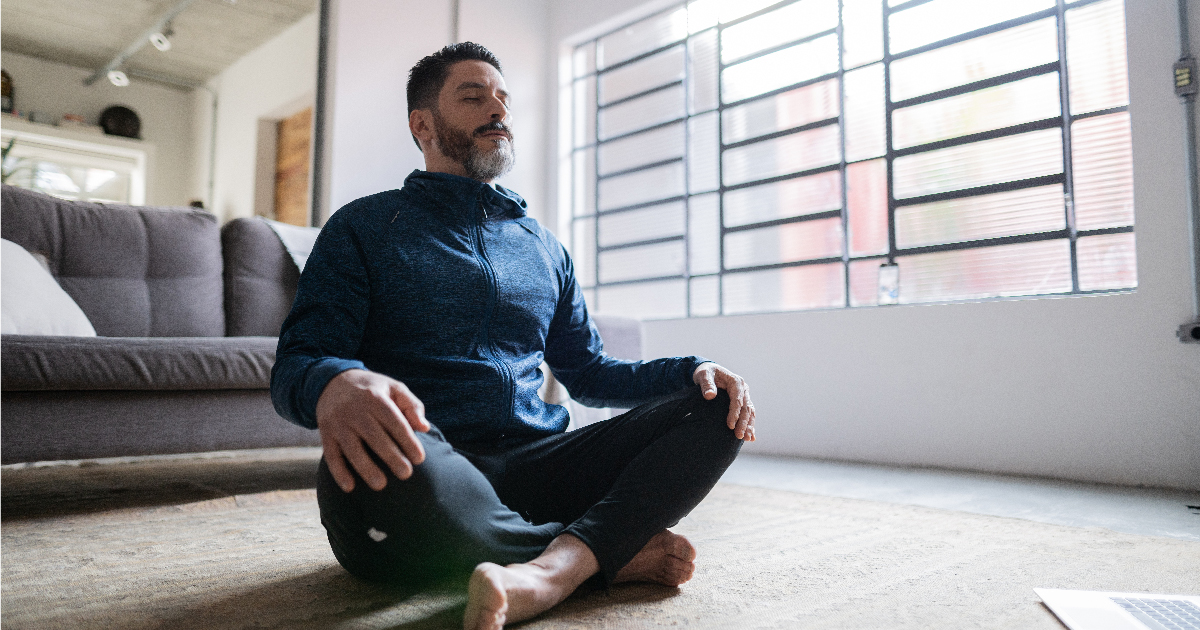
Acella Pharmaceuticals, LLC, is partnering with Lexi Hawks, an E-RYT 500 Hr Yoga Alliance Certified Teacher, to bring greater awareness to the importance of thyroid care and education. This post was sponsored by Acella Pharmaceuticals and should not be construed as medical advice. Please talk to your doctor about your individual medical situation.
Disclaimer: The information provided is for educational purposes only and does not substitute professional medical advice. Consult a medical professional or healthcare provider before beginning any exercise, fitness, diet, or nutrition routine.
It’s no surprise that travel and vacations are on the rise. Many of us are eager to see friends and family who were deeply missed through the thick of the COVID-19 pandemic. While travel and vacation can be the perfect time to disconnect and recharge, let's face it … travel can also be full of stress and unexpected changes. Plus, with more remote work happening these days, are we truly disconnecting to recharge our batteries?
A great way to calm travel nerves and stress while keeping the aches and pains of sitting or sleeping on a different mattress at bay is a short "yoga on the go" routine. Don't fall into the trap of thinking that yoga (or any exercise) has to be of a long duration to be effective. When it comes to yoga, the "daily ritual" can be adapted to meet your needs and time demands while providing a welcomed connection to self that leaves you refreshed, centered, and experiencing a state of contentment.
Yoga On-the-Go Series
Start in a comfortable seat with a long spine. This can be in a chair or on the floor. Close your eyes or look downward. Let your mind notice your breath. Feel your breath move in and out. Enjoy about 12 cycles of inhales and exhales. This is a nice time to scan your body and simply feel what is without changing anything.
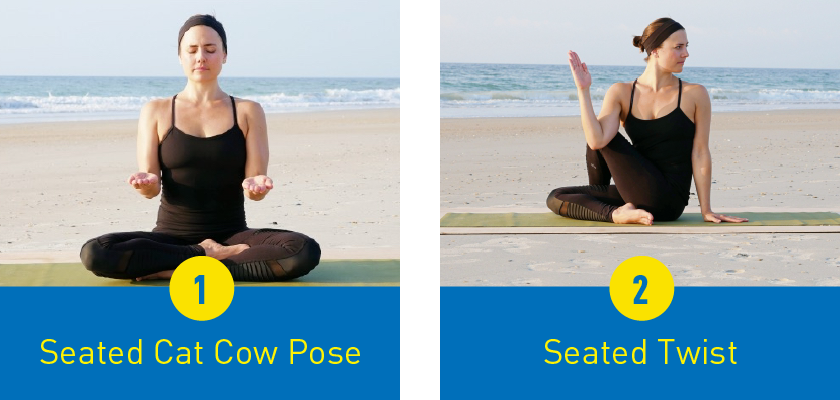
Place your hands on your knees and start to follow the movement of your breath with your chest. As you inhale, extend your spine long and upward. When you exhale, curl your spine. Repeat this motion of seated “cat and cow pose” several times.
Return to center and inhale. Reach your arms overhead, and with an exhale rotate your torso to the left, taking a gentle twist while allowing your right hand to land on your left leg and your left hand to land on the ground behind you. Inhale, return to center and reach your arms overhead, then exhale and rotate to the opposite side. You can take this a few times left and right. Keep your spine long as you take a seated twist.

From your seat, bend both legs in front of your body and place your heels on the floor. Place your hands on the ground behind you for support. Next, place your right ankle just over the top of your left knee, like you’re making a figure 4 shape. Keep your right foot in a flexed position, and with your seat grounded, reach your energy upward in the torso while the right leg externally rotates. Breathe into the stretch of your hip muscles in seated pigeon. Stay here for about 12 cycles of breath. Repeat on the left side.
Come to stand and join your legs together. Press your heels firmly into the ground and reach the effort of the body upward. Stand tall in Mountain Pose.
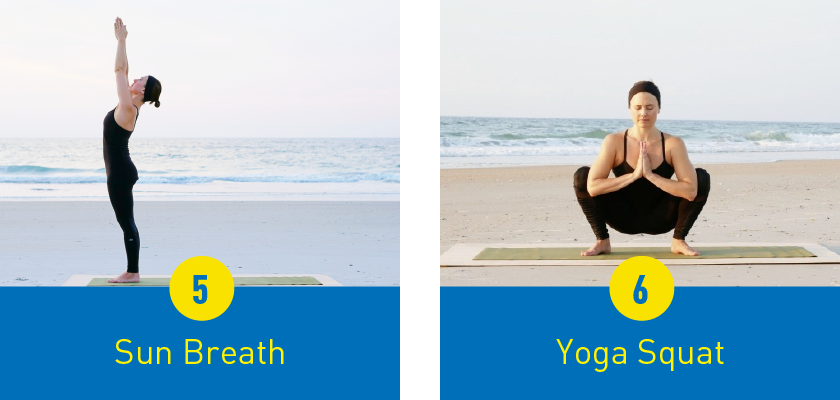
Inhale and reach your arms overhead. Exhale and press your palms together and draw the hands down the center line of your body. Repeat the actions of a sun breath three times. Next, step your feet hip-distance apart, with a slight external rotation at your hips. Start a sun breath with your arms, and now add a bending of the knees into a yogic squat as you draw the hands through the center line of the body. Only go as deep as is comfortable and stable in your feet, knees and hips. Some people might find squatting to the level of the chair to be plenty, while others might choose to go lower. Listen to your body. The exhale will take you down into the squat and the inhale will draw you back up using the strength of your legs. Do as many as you wish or until you feel your body get warmer. Be sure you are moving with your breath. If you cannot maintain your breath while doing this, then stop.
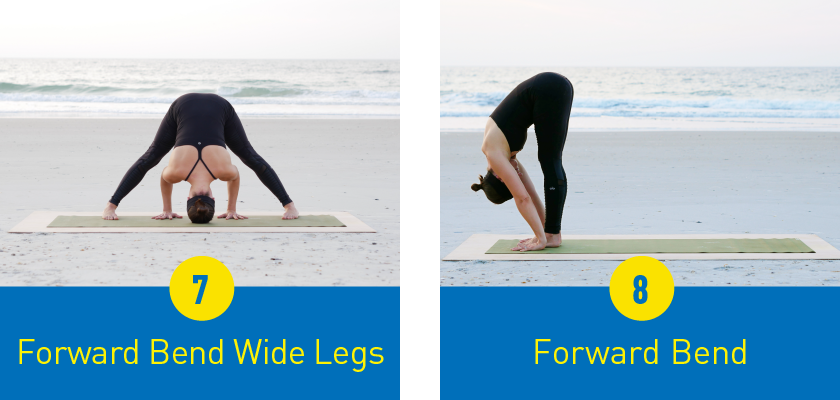
Step your feet wide and parallel. Press your feet firmly to the ground and inhale. Stretch your arms overhead, then forward bend with wide legs from your hips. Your hands can be placed on a wall, chair, or on the floor with the hands under your shoulders and arms straight. Keep your legs active and your spine long. With strong legs, put your hands on the hips, and inhale to rise up.
Return to mountain pose with your feet a comfortable distance apart. Hinge forward from your hips and forward bend. Your hands can be placed on a wall, chair, shins or floor. Keep your legs active and your spine long. With strong legs, put your hands on your hips, and Inhale to rise up.
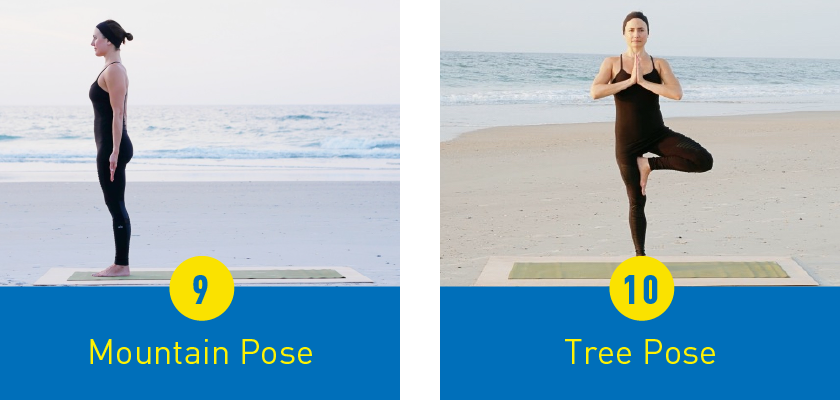
Join your legs in Mountain Pose and turn your right leg out. Place the sole of your foot on the inner calf or inner upper thigh. Press the standing leg down and gently engage your outer hips to help stabilize the balance in Tree Pose. Place your hands on your hips or try reaching your hands overhead. Hold for 5 to 10 breaths. If you fall out, try again. Repeat on your other side.
Remind yourself that balance is different every day. Some days we have it, and other days we lack it. It’s helpful to keep your thoughts light-hearted when attempting a one-legged balance.
After trying tree pose, step your feet apart about one to two feet in a parallel position and gently rotate side to side, allowing your arms to swing with ease. This is a slight rotation and swinging motion of the body.
Return to mountain pose with your feet hip-distance apart. Place your hands on your lower back, just above your hips, with your fingertips facing the floor. Press your feet firmly and reach the effort of your body upward toward the ceiling. Gently press your hands into your lower back and hips to slowly and mindfully extend your spine upward to open the heart-center in a Standing Backbend. Maintain this pose for a few cycles of breath, then use the inhale to return to center.
To complete this “yoga on the go” practice in a centered and alert state, come to stand once again in Mountain Pose (or sit down, if you prefer) and bend your elbows at the sides of your torso 90 degrees with the palms of your hands facing upward directly in front of your body; think of it like holding a serving platter. Close your eyes or cast your gaze downward. Breathe in through your nose for the count of 4 and breathe out for the count of 4. Repeat this breath cycle for 1 minute while feeling a sense of receiving positive energy in your hands and sending positive energy outward.
After one minute, bring your palms to touch at the center of your chest and bring a gratitude to mind. It can be anything you are thankful for. Let this thought put a smile on your face and a warmth in your heart-center. Gently bow your head toward your hands in a gesture to end your yoga practice. Slowly lift your head and open your eyes. Take a moment to look around with a freshness in the eyes and mind. Now, off you go to enjoy your day!
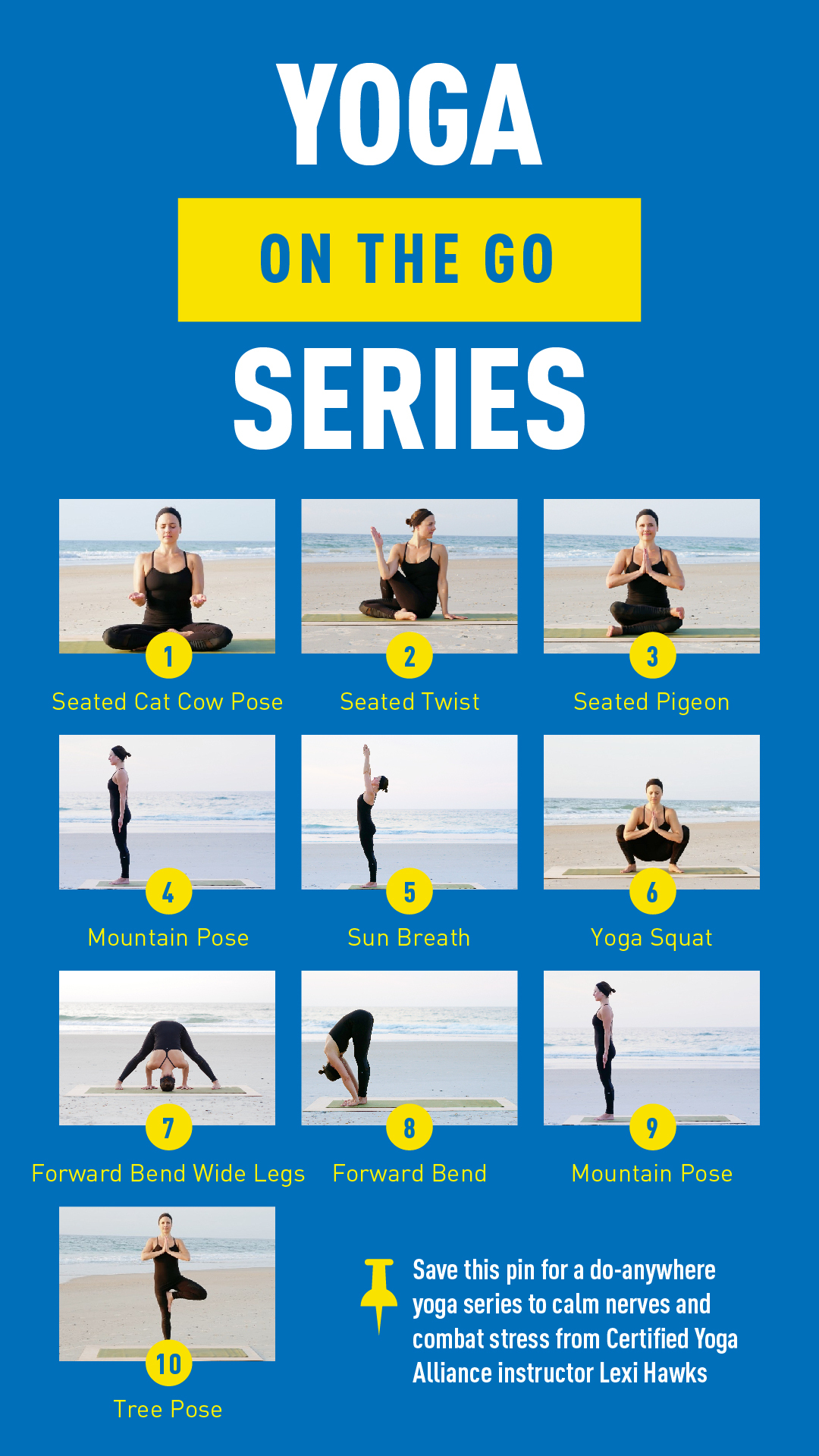
2052-v1
Note that DTE products, including NP Thyroid®, have not been reviewed by the FDA for safety or efficacy.
IMPORTANT RISK INFORMATION, INCLUDING BOXED WARNING & INDICATIONS
Important Risk Information
Drugs with thyroid hormone activity, alone or together with other therapeutic agents, have been used for the treatment of obesity. In euthyroid patients, doses within the range of daily hormonal requirements are ineffective for weight reduction. Larger doses may produce serious or even life-threatening manifestations of toxicity, particularly when given in association with sympathomimetic amines such as those used for their anorectic effects.
- NP Thyroid® is contraindicated in patients with uncorrected adrenal insufficiency, untreated thyrotoxicosis, and hypersensitivity to any component of the product.
- In the elderly and in patients with cardiovascular disease, NP Thyroid® should be used with greater caution than younger patients or those without cardiovascular disease.
- Use of NP Thyroid® in patients with diabetes mellitus or adrenal cortical insufficiency may worsen the intensity of their symptoms.
- The therapy of myxedema coma requires simultaneous administration of glucocorticoids.
- Concomitant use of NP Thyroid® with oral anticoagulants alters the sensitivity of oral anticoagulants. Prothrombin time should be closely monitored in thyroid-treated patients on oral anticoagulants.
- In infants, excessive doses of NP Thyroid® may produce craniosynostosis.
- Partial loss of hair may be experienced by children in the first few months of therapy but is usually transient.
- Adverse reactions associated with NP Thyroid® therapy are primarily those of hyperthyroidism due to therapeutic overdosage.
- Many drugs and some laboratory tests may alter the therapeutic response to NP Thyroid ®. In addition, thyroid hormones and thyroid status have varied effects on the pharmacokinetics and actions of other drugs. Administer at least 4 hours before or after drugs that are known to interfere with absorption. Evaluate the need for dose adjustments when regularly administering within one hour of certain foods that may affect absorption.
- NP Thyroid® should not be discontinued during pregnancy, and hypothyroidism diagnosed during pregnancy should be promptly treated.
Indications
NP Thyroid® (thyroid tablets, USP) is a prescription medicine that is used to treat a condition called hypothyroidism from any cause, except for cases of temporary hypothyroidism, which is usually associated with an inflammation of the thyroid (thyroiditis). It is meant to replace or supplement a hormone that is usually made by your thyroid gland.
NP Thyroid® is also used in the treatment and prevention of normal functioning thyroid goiters, such as thyroid nodules, Hashimoto’s thyroiditis, multinodular goiter, and in the management of thyroid cancer.
Revised
10/2023
You Are About To Leave This Website
By clicking continue, this link will take you to a website to which Alora Pharmaceuticals’ Policies & Terms of Use do not apply.
^Based on prescriptions filled, NP Thyroid® is the #1 Prescribed DTE in the United States. Source: IQVIA National Prescription Audit (NPA) data on file. Acella Pharmaceuticals, LLC.
